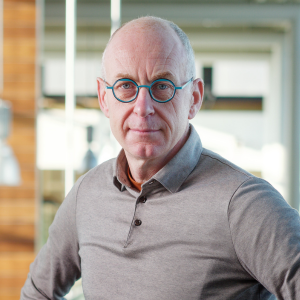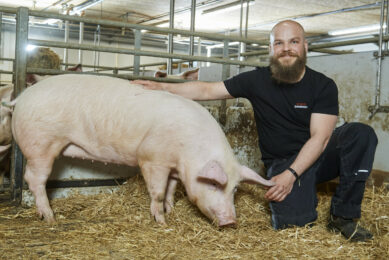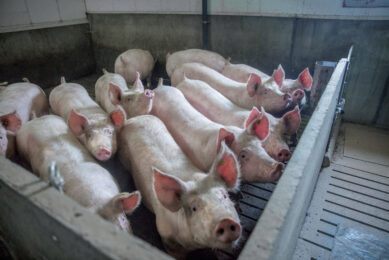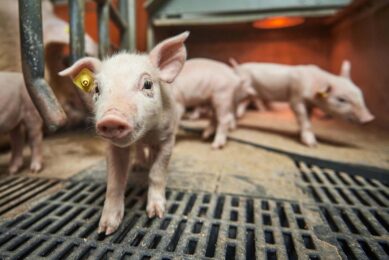Farm visit: New Norwegian boar test station is all about data

International breeding company Topigs Norsvin proudly opened the latest location of its expanding global network this June: a boar test station near Hamar in Norway. From here, it can ship about 5,000 boars per year around the globe. Each animal comes with a detailed passport full of data, facts and pedigree.
As rainy clouds come and go, buses packed with visitors are driving on and off. They have all travelled to Løten, about 140 km north of the Norwegian capital Oslo, to admire Topigs Norsvin’s brand new boar test station, called Delta Norway. On this day in June 2024, the Norwegian hosts have spared no effort to create a festive atmosphere before the farm is officially being taken into use. Butchers are working to debone a pig belly and in addition, in a big tent, pølse is being served. This is a typical Norwegian hot dog rolled in a pancake.
For the Norwegian segment of the Topigs Norsvin breeding company, the boar test station is nothing less than a milestone. Norsvin president Per Inge Egeland explains: “It is the company’s biggest investment ever.” The Norsvin cooperative has been existing since 1958. In 2014, Norsvin teamed up with the Dutch genetics cooperative Topigs to form Topigs Norsvin, to jointly conquer the world of pig breeding.
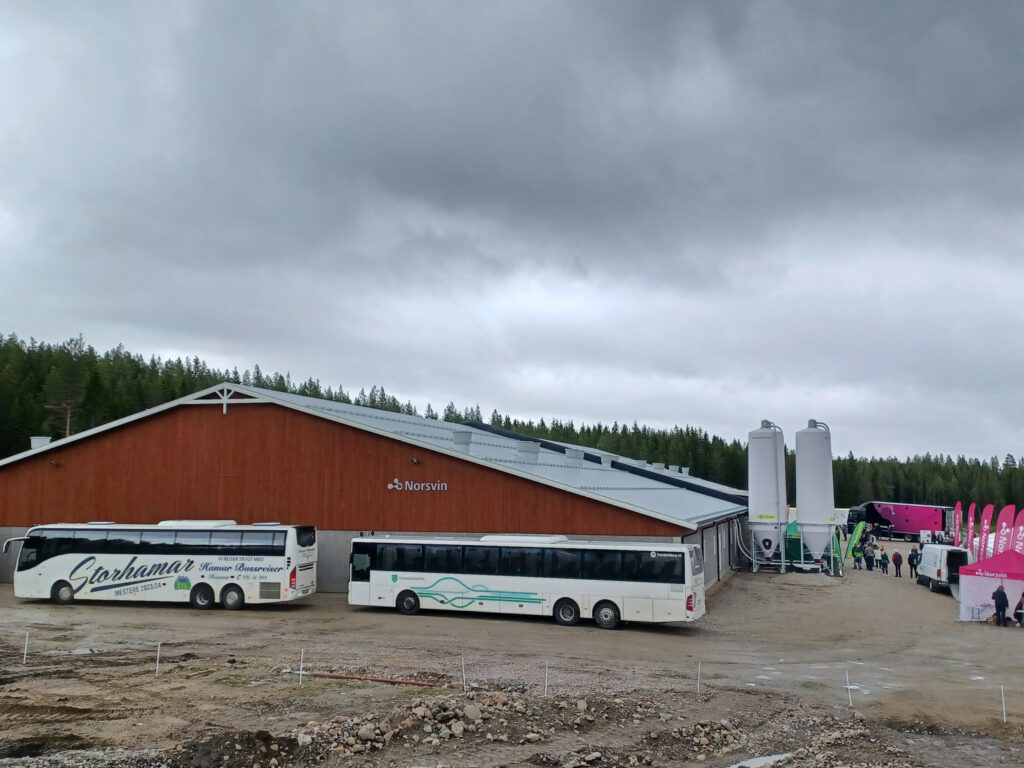
Acquiring data
In that expansion process, the construction of the new facility Delta Norway is the latest step. The new test farm is all about acquiring data. After all, in order to achieve ongoing genetic progress it is vital to know about the breeding pigs’ growth, performance, leg quality and maternal qualities to name a few. Those elements help to eventually determine a breeding value.
In the breeding programme, Topigs Norsvin considers meat quality to be important, just like maternal characteristics, animal welfare and efficiency. Feed conversion therefore is considered a key characteristic, as it constitutes the lion’s share of the costs – especially in Norway where feed is relatively expensive. To illustrate that, Topigs Norsvin emphasises that per finished pig, 22 kg less feed is needed than 5 years ago. Torunn Aasmundstad, director breeding and genetics, says that all users of Topigs Norsvin genetics around the globe together need 660,000 ha of land less for feed than half a decade before.
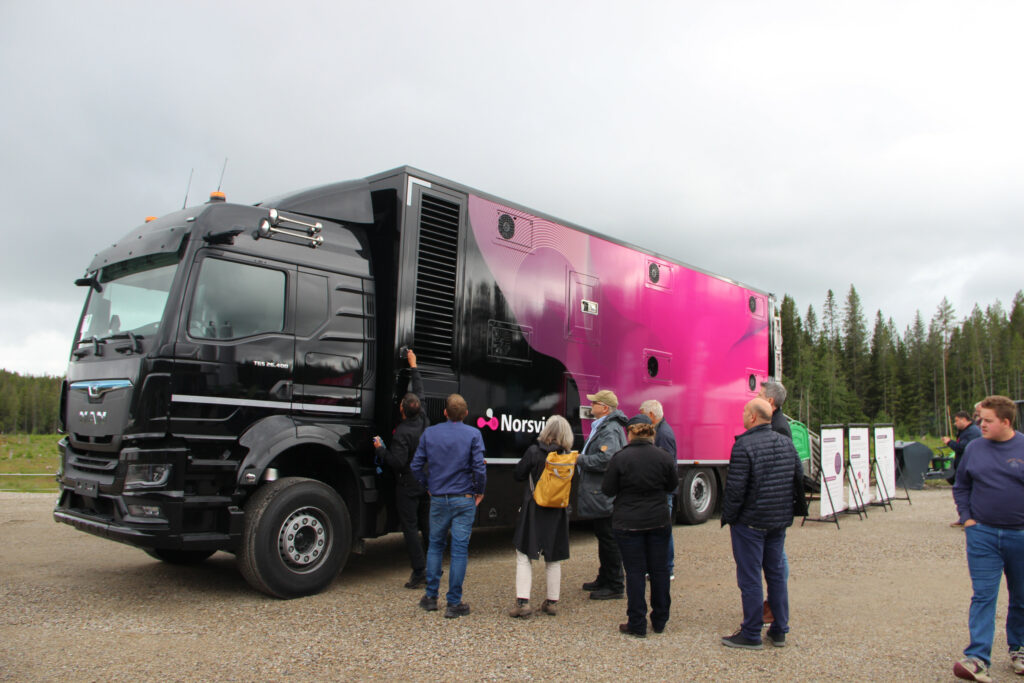
Creating a central test station
To collect the data, a centrally located test station in Norway was essential. By law, Norwegian farms can only have a limited size of about 100 sows, which makes that boars have to be born and bred all over Norway. Decentral data collection, however, would both be inefficient and expensive.
Once in full operation, the boars will be gathered at Delta Norway at a weight of about 40 kg. The animals will stay at Delta Norway until they are roughly 130 days of age, at which moment they weigh about 130 kg. That is when they may be shipped to artificial insemination (AI) centres all over the country as well as abroad.
The new 4,400 m2 large station has a capacity to test 5,000 boars per year, and replaces an older one with a capacity of 3,000 boars.
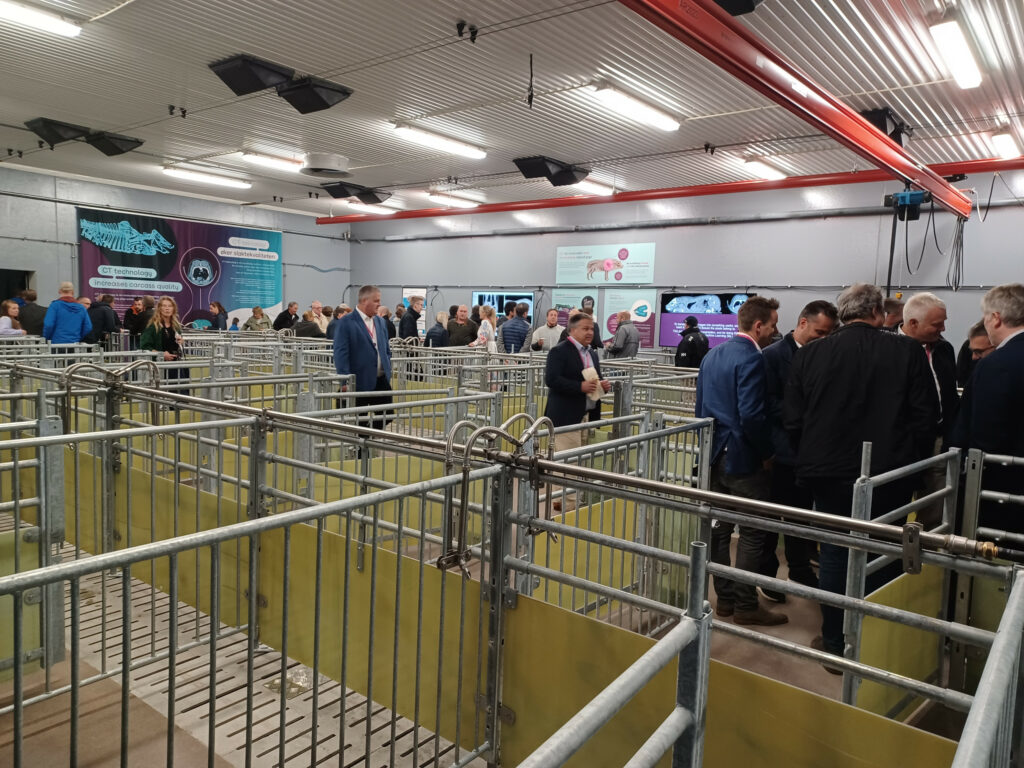
Data collection
The farm site employs 6 people. They will be taking care of the animals and will do trials whenever necessary.
The young boars’ careers start when they enter the test station, at about 40 kg. They get trucked in from all over the country from 36 breeders (28 Landrace and eight Duroc breeders). Transport occurs with a modern lorry, which is also on display at the open door day. The vehicle is equipped with air filtration to keep pathogens away from the loading deck. Initially, the animals will stay in an isolation barn for 2 weeks, during which a health test is being conducted.
The animals end up in a pig house consisting of 11 regular sections with each 12 pens for growing boars. Every pen there has a feeding station following the boars’ feed intake and growth – together those parameters constitute feed conversion. In addition, at the ceiling, above each pen, there is a camera to keep an eye on animal behaviour. That way it is being monitored how often the boars show up at the trough.
All data are being combined and sent to the Norsvin headquarters in Hamar, a town 15 km to the west. A large antenna on the roof ensures that data transmission will always be successful despite the relative remote location.
CT-scan
Without a doubt the most impressive moment of the boars’ stay – and clearly leaving a lasting impression on many visitors – is what happens in section number 12, also known as the “dormitory.” That is where each boar will get a CT scan just before his departure at 130 kg live weight. This phase requires much trial work. Staff will administer a sedative to boars prior to making them go through the scan. The dormitory, consisting of 47 pens, is equipped with a rail running at the ceiling, to which a sleeping boar can be suspended. That way, very smoothly, boars can be scanned.
Of each boar, the CT scan makes 1,200 cross section images. Those images play an important role determining both carcass quality as well as health characteristics. The latter is important in relation to organ development, like e.g. lungs as well as heart, but also the joints. The scan outcomes also play an important role to determine the boars’ robustness.
That characteristic is growing in importance rapidly, as what matters in modern-day pig production is independent sows, which have decent longevity, producing piglets with high vitality. Efficiency, in other words, has become a major breeding goal. A goal which leads directly to a lower CO2 footprint of pork.
Practical and good fun
In terms of design, the boar test station has been designed in a practical manner. In the back is an area for welcoming young boars. On the side, next to a feed kitchen with a wood shavings dispenser, there is a zone for boars that have not passed the breeder’s quality test, for instance when average growth is suboptimal, having a high feed conversion, inadequate footwork or have displayed too aggressive behaviour, to name a few. Those animals will be sent off for slaughter. In a separate building, attached to the side, and invisible from the road side, is an office and a cafeteria.
In the design, staff has certainly not been forgotten. Good working conditions matter for Norwegian staff, so much is clear. For instance, the weighing unit of the feeding stations are easy to lift for dust removal. After all, dust could impact the scales’ accuracy. Secondly, in the central aisle, there is a systemic ceiling, to mimic the feeling of it being an office environment. Thirdly, the door to each department has been decorated aptly, depicting a different aspect from agriculture. That could be a pig house, or a field of rye almost ready for harvest. Last but not least, the pig house has been designed spaciously, and natural daylight comes in everywhere.


